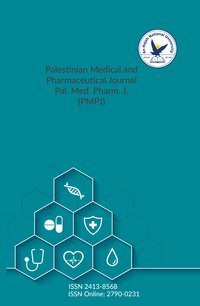Lower Urinary Tract Symptoms and Quality of Life Among Female Hemodialysis Patients in Palestine: Prevalence and Risk Factors
Authors:
Article info
2024-04-20
2024-06-17
2024-11-11
35 - 40
Keywords
- Quality of Life
- Hemodialysis
- risk factors
- female patients.
- Lower urinary tract symptoms (LUT)
Abstract
Introduction: Lower urinary tract symptoms (LUTS) are prevalent globally. Limited research has explored LUTS in hemodialysis (HD) patients, who often experience diminished quality of life (QoL). This study aims to evaluate LUTS among female HD patients, with assessment of the symptom, risk factors, and impact on QoL. Methods: A prospective, cross-sectional study was conducted among 94 female HD patients, assessing demographics, clinical data, and LUTS using the Bristol Female Lower Urinary Tract Symptoms (BFLUTS) questionnaire. Statistical analysis examined correlations between BFLUTS, demographics, and QoL. Results: Among the study population, 91.5% of female HD patients experienced at least one filling symptom, with the most common being nocturia (65%, n = 61). Voiding symptoms were observed in 63% of participants, with hesitancy (49%, n = 46), straining (33%, n = 31), and intermittency (45%, n = 42) being notable. Incontinence symptoms were prevalent, with urgency incontinence reported by 23% of participants (n = 22). Statistically significant correlations were found between the duration of dialysis and voiding symptoms (r = 0.240, p = 0.021), as well as between poor QoL and storage symptoms (r = 0.212, p = 0.040) and incontinence symptoms (r = 0.439, p < 0.001). Additionally, significant associations were found between the presence of incontinence symptoms and diabetes mellitus (p = 0.002) and smoking (p = 0.042). Conclusion: The impact of LUTS on females undergoing HD is prevalent and should be considered as disabling syndrome. The QoL in such cohort of patients is also affected. Thus, screening protocols should be put in place to address such problem.
Lower Urinary Tract Symptoms and Quality of Life Among Female Hemodialysis Patients in Palestine: Prevalence and Risk Factors
المؤلفون:
معلومات المقال
2024-04-20
2024-06-17
2024-11-11
35 - 40
الكلمات الإفتتاحية
- Quality of Life
- Hemodialysis
- risk factors
- female patients.
- Lower urinary tract symptoms (LUT)
الملخص
Introduction: Lower urinary tract symptoms (LUTS) are prevalent globally. Limited research has explored LUTS in hemodialysis (HD) patients, who often experience diminished quality of life (QoL). This study aims to evaluate LUTS among female HD patients, with assessment of the symptom, risk factors, and impact on QoL. Methods: A prospective, cross-sectional study was conducted among 94 female HD patients, assessing demographics, clinical data, and LUTS using the Bristol Female Lower Urinary Tract Symptoms (BFLUTS) questionnaire. Statistical analysis examined correlations between BFLUTS, demographics, and QoL. Results: Among the study population, 91.5% of female HD patients experienced at least one filling symptom, with the most common being nocturia (65%, n = 61). Voiding symptoms were observed in 63% of participants, with hesitancy (49%, n = 46), straining (33%, n = 31), and intermittency (45%, n = 42) being notable. Incontinence symptoms were prevalent, with urgency incontinence reported by 23% of participants (n = 22). Statistically significant correlations were found between the duration of dialysis and voiding symptoms (r = 0.240, p = 0.021), as well as between poor QoL and storage symptoms (r = 0.212, p = 0.040) and incontinence symptoms (r = 0.439, p < 0.001). Additionally, significant associations were found between the presence of incontinence symptoms and diabetes mellitus (p = 0.002) and smoking (p = 0.042). Conclusion: The impact of LUTS on females undergoing HD is prevalent and should be considered as disabling syndrome. The QoL in such cohort of patients is also affected. Thus, screening protocols should be put in place to address such problem.
Since 2022
Cite Score (Scopus): 0.8
Time to First Decision: 3 Days
Submission to Acceptance: 45 Days
Acceptance Rate: 17%
Why should you
Publish With Us?
An-Najah National University
Nablus, Palestine
Nablus, Palestine
- P.O. Box
- 7, 707
- Fax
- (970)(9)2345982
- Tel.
- (970)(9)2345560
- (970)(9)2345113/5/6/7-Ext. 2628
- [email protected]
- EIC
- Prof. Waleed Sweileh
The Palestinian Medical and Pharmaceutical Journal (Pal. Med. Pharm. J.) © 2024 by An-Najah University, Nablus, Palestine is licensed under CC BY-NC 4.0
News and Views
